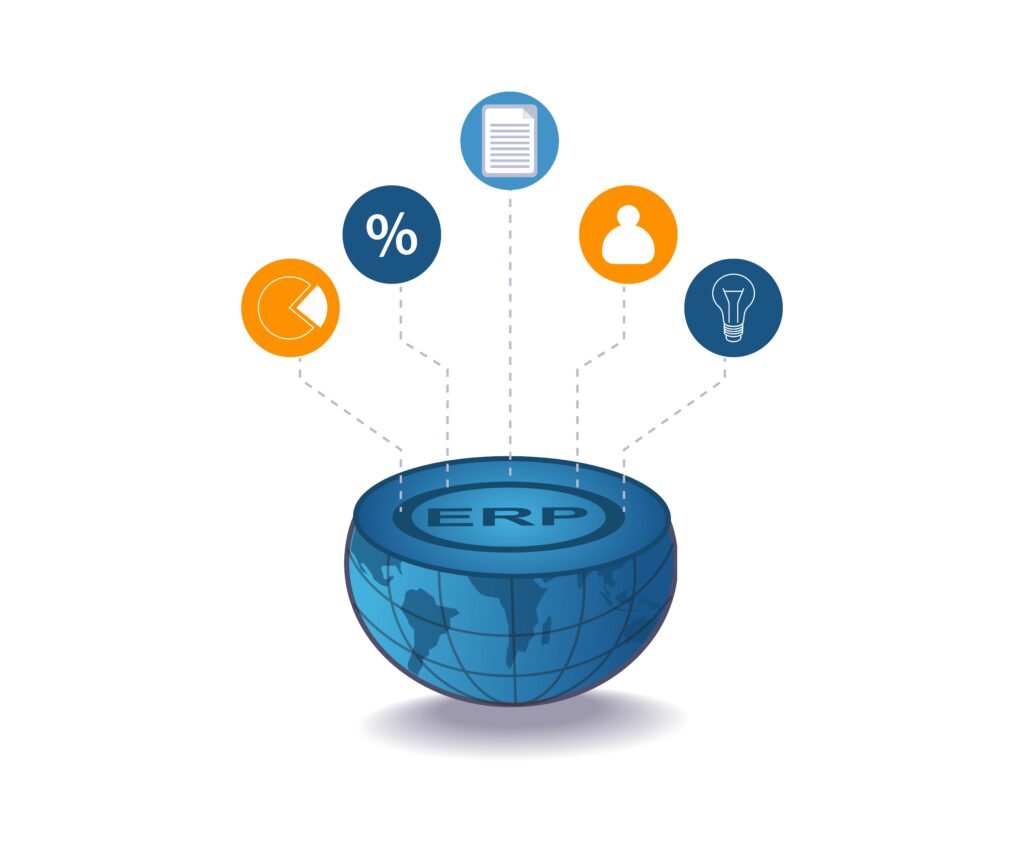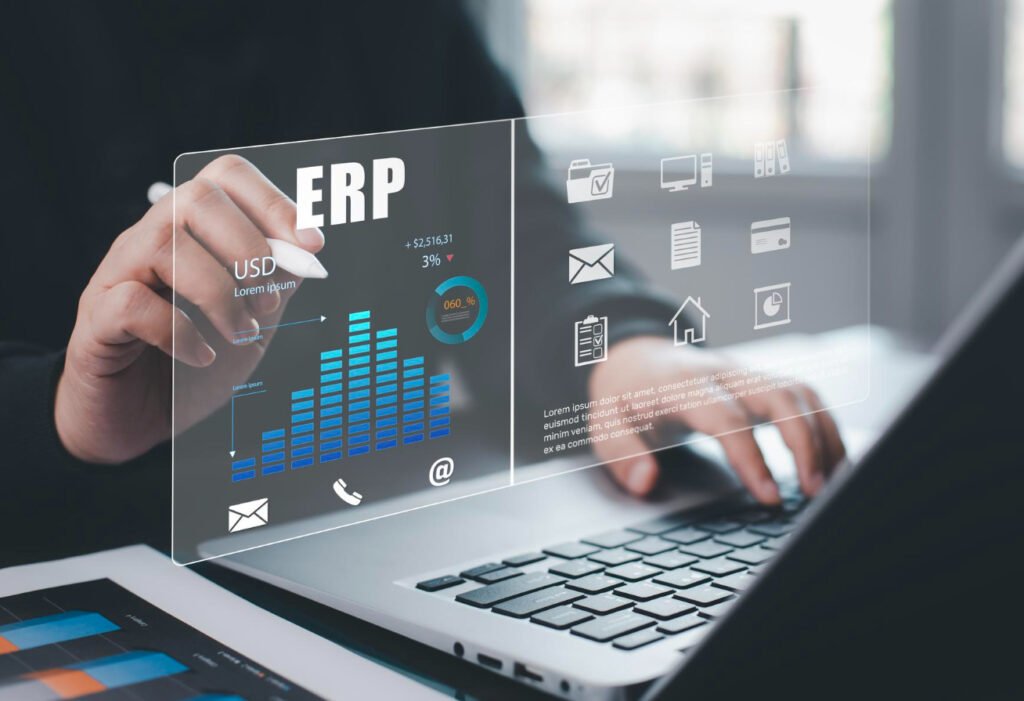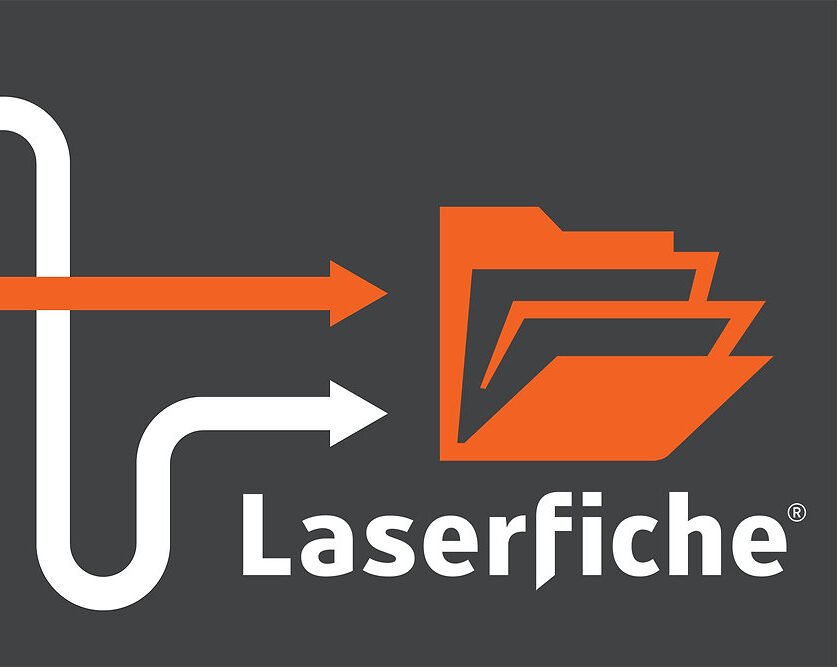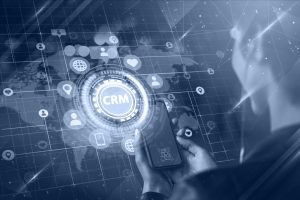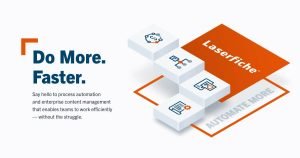Today, Enterprise Resource Planning (ERP) systems are the primary means of coordinating business operations by consolidating various functions into one system and simplifying processes and information across all departments.
As businesses continue to grow and evolve, the management of resources (resources), data (information, and processes) becomes more complex. The solution to this problem lies in the use of ERP systems that offer a unified platform connecting all departments, leading to increased efficiency and decision-making.
Conventionally, corporations were structured as silos, with distinct departments responsible for storing and managing their own data and processes. Inefficiencies, data inconsistencies, and communication obstacles were caused by the fragmentation.
This method was transformed by the emergence of ERP systems, which allowed companies to consolidate their functions into a single system. The use of ERPs can address various business functions, including finance and human resources, supply chain management, customer relations, and more, by enabling information to flow smoothly and maintain operational consistency across all business units.
ERP Overview
An organization’s digital center is where Enterprise Resource Planning (ERP) systems are positioned. A comprehensive software stack is created by combining different business processes into a single system, offering consolidated management of all operations. By combining information from different departments, such as finance, HR, manufacturing and sales, ERP systems enable data to be communicated and sold across the organization.
The primary objective of an ERP system is to eliminate red tape and streamline processes. An ERP system’s ability to update records across modules can be achieved through a single data entry, which ensures consistency and accuracy. Real-time data availability enables managers to make more informed decisions, enabling them to respond quickly to changing business conditions.
Additionally, ERPs provide flexibility in terms of adjusting to business expansion and changing demands. The aim of their design is to provide support for a range of industries, including manufacturing and retailing, as well as healthcare and finance.
Integrated modules tailored to industry needs are part of ERP systems, which offer solutions for unique business problems.
ERP Benefits
The benefits of ERP systems are manifold, driving operational efficiency and strategic advantage. One of the primary benefits is improved data accuracy and consistency. Since ERP systems centralize data, they eliminate the errors associated with manual data entry and disparate systems. This accuracy is crucial for generating reliable financial reports, compliance documentation, and strategic planning.
Another significant benefit is enhanced productivity. ERP systems automate routine tasks such as order processing, inventory management, and payroll, freeing employees to focus on value-added activities. Automation also accelerates processes, reducing cycle times and increasing throughput.
ERP systems also enhance customer satisfaction by improving order accuracy, delivery times, and service quality. By providing a 360-degree view of customer interactions, ERP systems enable businesses to anticipate customer needs, personalize services, and resolve issues promptly.
Cost reduction is another key benefit. ERP systems help businesses optimize inventory levels, reduce waste, and negotiate better supplier contracts through improved demand forecasting and procurement processes. Over time, these efficiencies translate into significant cost savings.
ERP Implementation
An ERP system requires a lot of effort to be effective, but it is rewarding nonetheless. The process usually starts with a comprehensive needs assessment, in which the company defines its requirements and objectives. By applying this evaluation, you can assist in selecting an appropriate ERP that satisfies the business’ requirements and meets industry benchmarks.
Following the selection of a solution, the implementation phase involves detailed planning, which includes setting project deadlines, allocating resources, and risk-management strategies. The involvement of stakeholders is an essential success factor in this phase. The system’s success is attributed to the involvement of key users and managers in the planning process, which ensures that it meets their requirements and encourages their backing.
The migration of data is another significant stage that requires careful planning and execution. To maintain data integrity and accuracy, organizations must purge and standardize the information before transferring it to the new system. This stage frequently requires a lot of work, as data inconsistencies and redundancies from legacy systems must be resolved.
A successful implementation of ERP necessitates the incorporation of training and change management. It is imperative to provide employees with the necessary training to operate the new system, and change management should be employed to address any resistance and ensure a smooth transition.
ERP Software
Selecting the right ERP software is pivotal to the success of the implementation. The market offers a wide range of ERP solutions, from large-scale systems like SAP and Oracle to more specialized platforms such as Microsoft Dynamics and Infor. The choice of software depends on factors like company size, industry requirements, budget, and specific business needs.
Cloud-based ERP solutions have gained popularity due to their flexibility, scalability, and lower upfront costs. These solutions allow businesses to access their ERP systems from anywhere, facilitating remote work and global operations. Moreover, cloud ERP providers handle system maintenance, updates, and security, reducing the burden on in-house IT staff.
On-premises ERP systems, on the other hand, offer greater control and customization but require significant capital investment and ongoing maintenance. These systems are often preferred by large enterprises with complex needs and robust IT infrastructure.
Open-source ERP solutions are another option, providing businesses with customizable and cost-effective alternatives. While these systems require more technical expertise to implement and maintain, they offer unparalleled flexibility and can be tailored to specific business processes.
ERP Integration
ERP Integration is the process of fusing the ERP system with other business applications and data sources to create a cohesive IT environment. A successful integration fosters the seamless exchange of information among systems, leading to increased efficiency and accuracy.
ERP systems can be integrated with CRM software, which is a common practice. Through this integration, sales and customer service teams can access real-time information on customer orders, inventory levels, and service histories, resulting in better interactions and overall customer satisfaction.
The integration with supply chain management (SCM) systems is a crucial aspect. By integrating ERP with SCM, businesses can streamline procurement and production while optimizing logistics operations. By utilizing real-time data exchange, it can improve demand forecasting capabilities, inventory management, and supplier coordination.
The use of Business Intelligence (BI) tools in ERP systems is advantageous, as it enables the integration of advanced analytics and reporting capabilities. Organizations can use ERP data to make strategic decisions, identify trends, and gain insights that enhance their business performance through this integration.
ERP Customization
While ERP systems offer a wide range of functionalities out-of-the-box, customization is often necessary to meet specific business requirements. Customization involves modifying the ERP software to align with unique processes, workflows, and reporting needs of the organization.
Customizing an ERP system can enhance its usability and relevance, ensuring that it supports critical business operations effectively. For example, a manufacturing company might customize its ERP system to include specific production metrics and quality control processes that are not covered by standard modules.
However, customization comes with challenges. It can increase the complexity of the system, making maintenance and upgrades more difficult. Custom solutions may also require additional development time and resources, increasing the overall cost of the ERP implementation.
To balance the benefits and challenges of customization, organizations should prioritize critical customizations that deliver significant value and consider leveraging configuration options within the ERP software to address less critical needs. Working with experienced ERP consultants and developers can also help ensure successful customization.
ERP Costs
The cost of implementing an ERP system can differ significantly depending on factors such as the organization’s size, the complexity of its processes, how much ERP software to use, and the level of customization required. The costs of ERP can be divided into various parts, such as software licensing, implementation services (such as consulting firms), hardware procurement, and ongoing maintenance. The cost of implementing an ERP system can differ significantly depending on factors such as the organization’s size, the complexity of its processes, how much ERP software to use, and the level of customization required.
Software licensing costs are determined by the pricing structure of the ERP provider. The costs of ERP can be divided into various parts, such as software licensing, implementation services (such as consulting firms), hardware procurement, and ongoing maintenance. Cloud-based solutions frequently adopt a subscription-driven model that charges monthly or annual fees, depending on the number of users and modules.
Software licensing costs are determined by the pricing structure of the ERP provider. The usual fee for on-premise services, which includes a one-time licensing fee and annual maintenance expenses, is to be provided. Cloud-based solutions frequently adopt a subscription-driven model that charges monthly or annual fees, depending on the number of users and modules.
The cost of implementation services covers project management, system configuration fees, data migration expenses, integration costs, and training costs. The usual fee for on-premise services, which includes a one-time licensing fee and annual maintenance expenses, is to be provided. These services can be provided by the ERP vendor or third-party consultants.
The cost of implementation services covers project management, system configuration fees, data migration expenses, integration costs, and training costs. The implementation expenses can be exorbitant, frequently exceeding the initial software licensing fees. These services can be provided by the ERP vendor or third-party consultants.
Servers, storage capacity, and networking equipment are necessary for on-premises ERP systems due to their high hardware costs. The implementation expenses can be exorbitant, frequently exceeding the initial software licensing fees. The management of infrastructure by the ERP provider helps to lower costs through cloud-based solutions.
ERP Training
Training is a crucial component of ERP implementation, ensuring that employees can effectively use the new system and realize its full benefits.
Comprehensive training programs should cover all aspects of the ERP system, from basic navigation to advanced functionalities relevant to specific roles.
Effective training involves a mix of methods, including classroom sessions, online courses, hands-on workshops, and user manuals.
Training should be tailored to different user groups, ensuring that each group receives the appropriate level of detail and practical application.
Investing in training can significantly enhance user adoption and reduce resistance to change. Employees who are confident in using the ERP system are more likely to embrace it and utilize its features to improve their workflows.
Ongoing training is also important, particularly as new features and updates are introduced. Regular refresher courses and advanced training sessions can help employees stay current with system capabilities and continuously improve their efficiency.
ERP Trends
The ERP industry is constantly evolving, with technological advancements and changing business demands.
One of the most notable trends in this area is cloud-based ERP solutions. Scalability, flexibility, and cost-effectiveness are the key benefits of utilizing the cloud, making it a great option for businesses. The increasing importance of cloud ERP in the business environment is exemplified by its ability to support remote work and global operations.
The use of artificial intelligence (AI) and machine learning (ML) is becoming more prevalent in ERP systems.
The integration of these technologies enables the implementation of predictive analytics, automated decision-making, and process optimization. Demand forecasting can be optimized with the use of AI, while routine tasks like invoice processing and anomaly detection can also be automated using machine learning (ML).
The Internet of Things (IoT) is affecting ERP systems, particularly in industries like manufacturing, logistics, and healthcare. ERP systems can be used to connect IoT devices and collect massive amounts of data, which can then be utilized to provide real-time insights into operations, asset management, and supply chain activities.
Summary
ERP systems are essential for large corporations and SMEs, integrating business functions for improved efficiency and decision-making.
They offer benefits like improved data accuracy, productivity, customer satisfaction, and cost reduction. Implementing an ERP system requires detailed planning, stakeholder engagement, and comprehensive training. ERP software options include cloud-based, on-premises, and open-source platforms.
Customization enhances usability but increases complexity and maintenance. Current trends include cloud-based solutions, AI and ML integration, and IoT for real-time insights.



